Dragon Age: Inquisition continues to devour just about every hour of free time I've had, since the game made its retail debut Nov. 18, and I've rounded up another batch of tips for those still having as much trouble putting down their copy of Dragon Age: Inquisition as I am.
By now, I assume many of you will have invested at least 10-20 hours in the game and there's a good chance some of you have spent even more time. Having recently completed the Dragon Age: Inquisition campaign, and with my focus now turning to multiplayer and finishing up the last few quests, I thought I'd share some of the practices that helped me lead the Inquisition to success.
Obviously, even with two of these articles up on the site now, it's hard to say that any one set of habits will guarantee success in Inquisition, in no small part because character/party builds will vary so much from person to person. But I tried to round up some tips that should help out just about anyone still working their way through the Dragon Age: Inquisition campaign and wondering how to improve their combat performance.
We've also got a few tips to help ensure you don't end up in over your head towards the end of the game, and to help those still struggling to find a balanced diet of Dragon Age: Inquisition content.
1. Hunt Dragons When You’re Bored
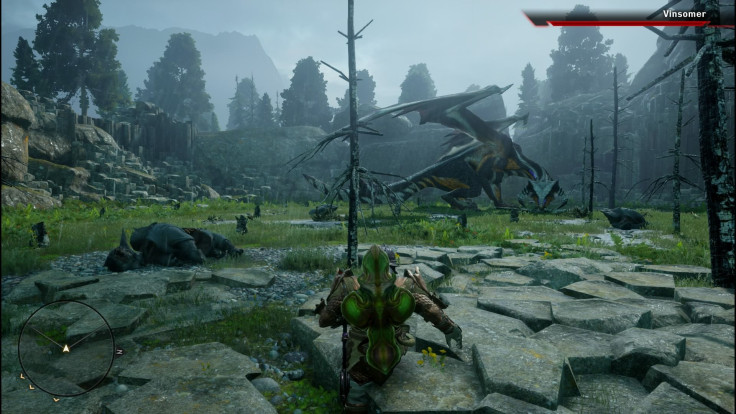
As someone who made this mistake myself, I know how tempting it can be to take the "I'll hunt them all at the end" approach to wyrm hunting in Dragon Age: Inquisition. The idea of returning to beginner zones, clad in the armor you've plundered from the game's toughest challenges, and laying waste to whatever creature(s) oppose you is an enticing one.
Unfortunately, things don't work out like that for a fair number of dragon encounters in Dragon Age: Inquisition. While a few extra levels can certainly make a difference against lower-level wyrms, like the Fereldan Frostback or the Northern Hunter, three-quarters of my level 21 party still found themselves woefully incapable of taking on the level 19 Vinsomer.
Fellow Inquisition players have reported similar issues when battling other dragons, too. The Highland Ravager in particular seems to be making quick work of those without the proper armor for such an encounter and you probably don't want to save the final trio of dragons for after you've crossed the level 20 (maybe 21 or 22) threshold.
2. Don’t Waste Dragon Materials On Mid-Level Gear
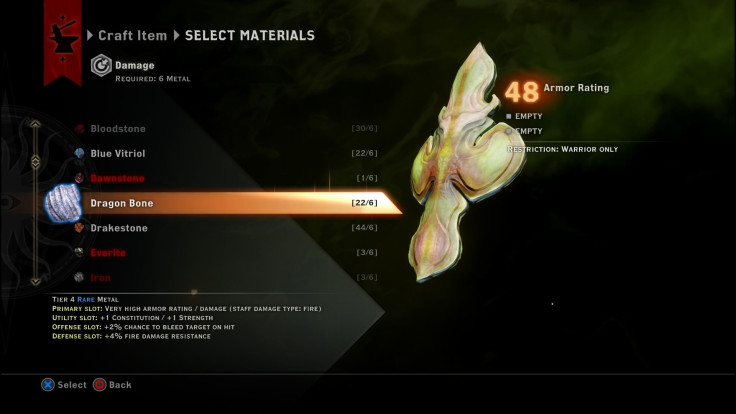
Last week, we pointed out that crafted gear is frequently better than the equipment that you'll pull off of your enemies in Dragon Age: Inquisition but we forgot to include one very important bit of information.
While crafting your gear is still a great idea in any scenario where its viable, those doing their best to mix campaign progress and dragon hunting will quickly find themselves in possession of various top-tier crafting materials, all of which can immediately be used to craft new gear for your party. But, for the love of Andraste, please don't do that.
Tier 4 crafting materials are incredibly rare in Dragon Age: Inquisition and in some cases (like dragon parts) supply is so limited that you'll have to decide which character(s) should get the most powerful equipment available to the Inquisitor and his/her crew.
3. Weapon And Armor Add-ons Are Your Friend
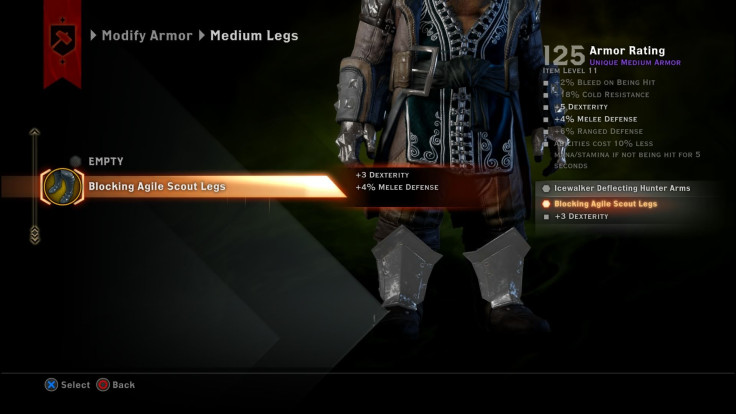
I won't go so far as to say it would be "easier" to finish Dragon Age: Inquisition, if players didn't need to spend so much time managing the inventories of everyone in their party, but I can certainly accept the premise that some people don't want to spend so much time doing so.
Having acknowledged that fact, let me say that the entire Dragon Age: Inquisition campaign will certainly be easier for those willing to invest the time needed to cross-check stats of all the swords, shields and other equipment being carried by your party.
We've talked previously about how important it is to wait and organize your loot back at Inquisition HQ but I wanted to take a few minutes to remind players that taking the time to build and shuffle the modifications for weapons and armor can be just as important to your survival. That's especially true when attempting to take down certain high-risk opponents; say, the level 23 Highland Ravager that Dragon Age: Inquisition players can find in Emprise du Lion.
4. Talk To Everyone
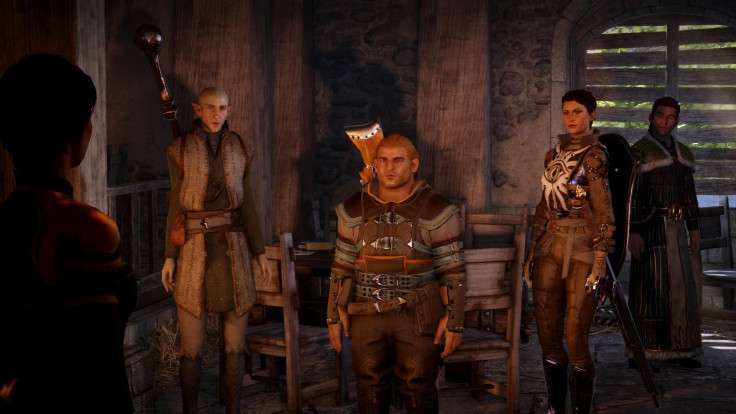
Obviously, any attempt to complete Dragon Age: Inquisition is going to come with a fair amount of dialogue. After all, the game's entire narrative is pretty politics-heavy, and there's a lot of backstory for those in the community who've never played another Dragon Age game. In fact, there's so much chatter that I suspect some players will be tempted to ignore whatever conversations they can, all in an effort to shave a few hours off one of the lengthiest single-player campaigns of 2014.
Don't do that.
For a variety of reasons, conversation should actually be one of the things you're seeking out most often during your time with Dragon Age: Inquisition. Whether your goal is finding treasure, creating a deep roleplaying experience, fleshing out the game's story or extra preparation for one of the game's tougher challenges, conversation will provide a little bit more of pretty much everything.
In fact, if you're adverse to the storytelling elements of Dragon Age: Inquisition, you might want to look at selling/trading the game at your earliest convenience. Conversation is a pretty big part of the Inquisition gameplay experience and, from what others have told me, that's not a new concept or major change of pace for the Dragon Age franchise.
5. Respecs Are Available At Home
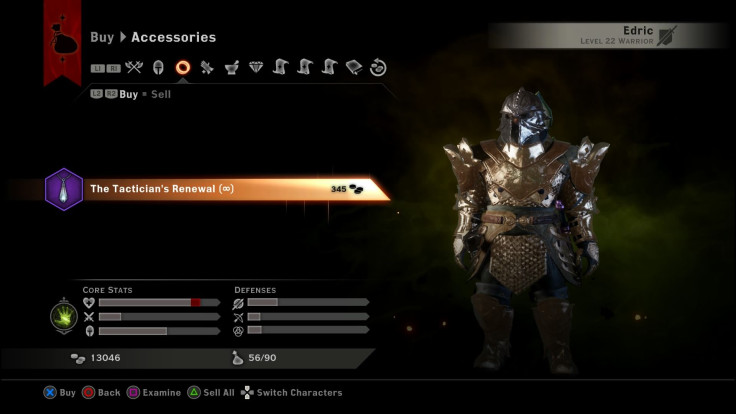
There really aren't all that many things worth buying in Dragon Age: Inquisition, unless you're interested in decorating Skyhold, but one thing that should prove useful to most Inquisition players is the Tactician's Renewal amulet that can be purchased in the Undercroft.
Your first amulet will only cost 1 gold, presumably out of acknowledgement that everyone will have at least one character that needs to be sent back to the drawing board, but Dragon Age: Inquisition players will be happy to know that there's technically no limit on how many amulets you purchase.
Even better, with a standard price of only 345 gold, there's not really much to stop a Dragon Age: Inquisition player from experimenting with a variety of builds for whichever character(s) he/she prefers to keep in the party.
6. Extra Levels Mean Less At The End
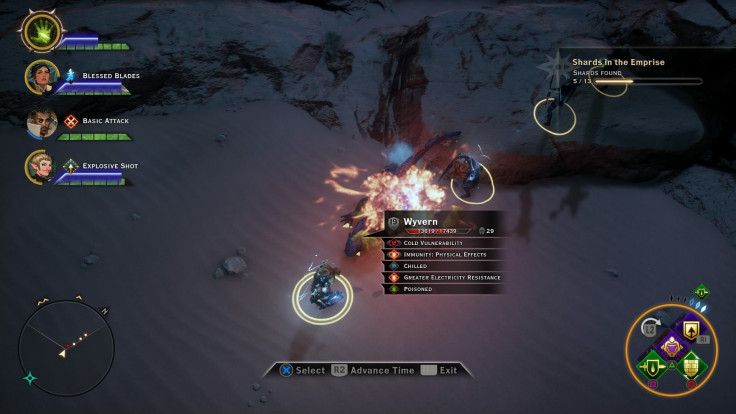
As some of you have likely already discovered, it's pretty easy to out level the enemies that you'll encounter throughout the Dragon Age: Inquisition campaign. In fact, out leveling the campaign content almost feels like a foregone conclusion if you spend more than a few hours on the various side-quests available to Inquisition players.
With that being the case, it's not hard to develop a few bad habits, especially when it comes to combat in Dragon Age: Inquisition. I didn't leave the Hinterlands with my first character until I was already level 10, and didn't complete an Inquisition quest until a few hours after that, so you can imagine how much stronger I was than the first couple of bad guys who stood in my way.
As a result, I all but abandoned the Tactical Mode introduced in Dragon Age: Inquisition, only to discover that I was woefully out-of-practice at running a meaningful strategy when it came time to tackle the game's final challenges. Even though I was multiple levels higher than the game's final boss, along with all of the minions I fought to reach them, I spent the last few hours with Dragon Age: Inquisition struggling to survive the battles I took part in.
It's easy to throw strategy and caution out the window in situations where it's clear that your opponent has no chance of beating you. But don't let that become your default mode of operation or the last few hours of Dragon Age: Inquisition will have you wondering just how badly you want to see the end of the story. The same can be said for the some of the game's strongest dragons.
7. Don’t Ignore The War Table
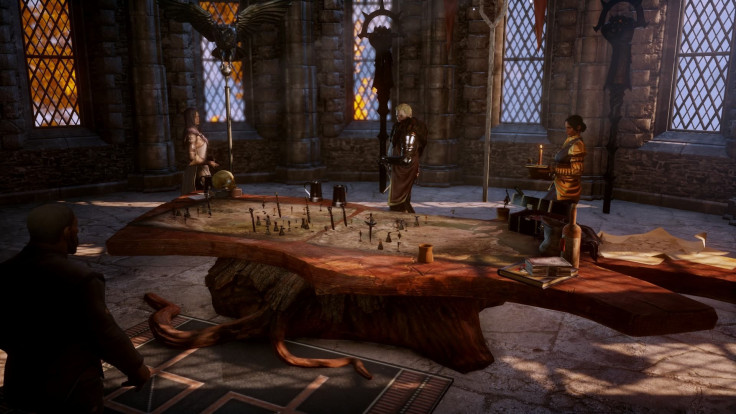
As our own Mo Mozuch learned on last week's podcast, the Inquisitor's war table plays a central role in the advancement of the Dragon Age: Inquisition plot; specifically, the tactical surface is where players will unlock each area of Thedas that can be explored during the Inquisition campaign. The potential for a change of scenery isn't the only reason to visit the war table, though.
Though the bulk of your interaction with the war table will be little more than assigning an agent to a task, and reading your chosen agent's report at the end of the mission, one of the most effective ways to locate high-value treasure in Dragon Age: Inquisition is to complete war table operations.
In some cases, the operations will give you access to secondary environments, most of which will only be accessible long enough for you to defeat the foe(s) found inside and recover whatever treasures you can carry during your first and only trek through the environment.
In other cases, unique weaponry and/or powerful schematics will be given to Inquisition players as soon as an operation is completed. There's even a series of quests that directly tie into the primary quest line and give your party an extra leg on the competition at some pivotal moments in the Dragon Age: Inquisition campaign.
8. Don’t Rush Major Encounters
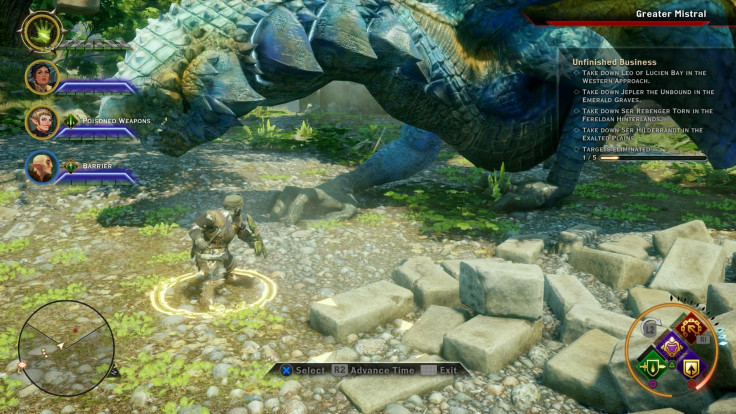
I touched on this briefly earlier, when mentioning that you shouldn't rush into the game's late-game encounters without taking a bit of time to strategize and prepare, but I felt like a need for patience justified its own entry on this list.
There are some fights in Dragon Age: Inquisition that are going to take you longer than you might expect -- sometimes even 30-plus minutes -- and those hoping to simply hold the right trigger and wait out the results are going to be disappointed. But it's these moments when the game's Tactical Mode proves just how useful it can be.
Yes, it's obviously going to lead to some slower action than you might otherwise see unfold on your television screen or computer monitor, but Tactical Mode almost feels as if it were designed specifically for these sorts of high-level encounters. Especially when it comes time to take on the dragons, many of which can be especially difficult to keep focused on your tank(s).
It may not be exciting to pause the action every couple of minutes, to reposition your ranged attackers or cue up an ability combo, but using Tactical Mode can frequently mean the difference between life and death for your party.
9. Stop Picking Up Grey Items
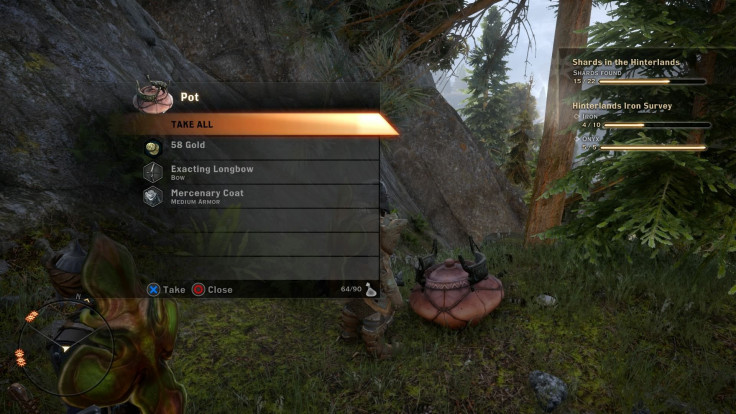
They're barely worth anything and will pretty much never offer better stats than they gear you're currently wearing. Even equipment that you're saving for your next level, no matter how close it may seem, will probably be made obsolete before you ever actually get a chance to equip it.
Towards the end of the Dragon Age: Inquisition campaign, when some of the items you encounter are at least worth a couple hundred gold, it probably wouldn't be a terrible idea to grab some of the more-valuable junk items you encounter. High-damage great swords, armor that's just shy of being usable, and that sort of thing. Just leave the grey rings and belts behind.
10. Your Rifts Are Always The Exception
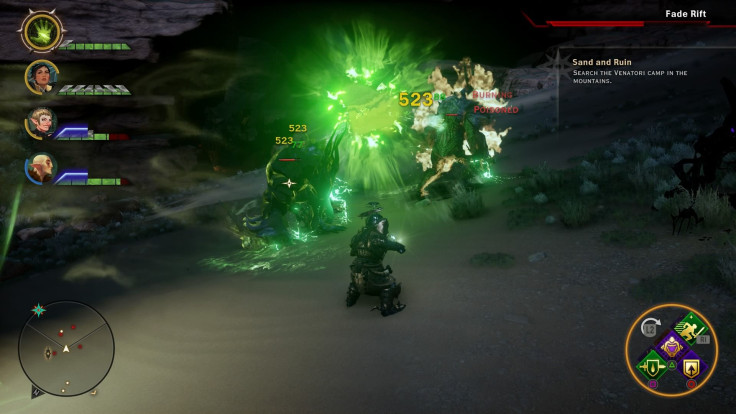
With powerful mages pretty much constantly at your disposal in Dragon Age: Inquisition, it can be easy to rely on an attack rotation built around freezing, fearing or otherwise incapacitating the various enemies that you encounter and nuking them into oblivion. But what about the many, many foes who are immune to Slow and other disabling effects?
As it turns out, you still have at least one option, provided you've completed enough of the Dragon Age: Inquisition campaign to weaponize the magical item implanted in your Inquisitor's hand.
While it's certainly tempting to use your Rift ability on the smaller foes that dot the landscape in Dragon Age, if only to watch it devour them like light entering a black hole, I can't overstate the ability's usefulness during fights against elite enemies. Especially if you're having trouble keeping the enemy in question from moving out of attack range or just need to keep your opponent (s) from overloading you with damage early/late in a fight.
The Rift also deals a fair amount of damage for the brief window of time that it remains open, allowing you to put a sizable dent in the health pool of just about anyone or anything found in Dragon Age: Inquisition. Just be sure you've charged your Focus meter before combat begins and make sure you're never leaving yourself without the ability to open a rift when you really need it.
****
Want to share your own Dragon Age: Inquisition tip(s) with the community?
Head down to the comments section and let us know what you technique(s) you've found most-helpful during your time with Dragon Age: Inquisition!
Do try to avoid both major and minor spoilers, though. After all, nobody likes having something as great as Dragon Age: Inquisition ruined for them. So let's make sure that everyone feels comfortable using the entire page as a viable source of new information on what could very well be the best game of 2014.
Be sure to check back with iDigitalTimes.com and follow Scott on Twitter for additional Dragon Age: Inquisition coverage, including our upcoming review of the game, for however long Bioware continues to produce new Dragon Age: Inquisition content in the months ahead.
What tips would you offer to those who've already spent a few dozen hours with the Dragon Age: Inquisition campaign? Disagree with one of our recommendations? Can't believe we forgot to leave something out of both our Dragon Age: Inquisition advice articles?
Let us know in the comments section!


















